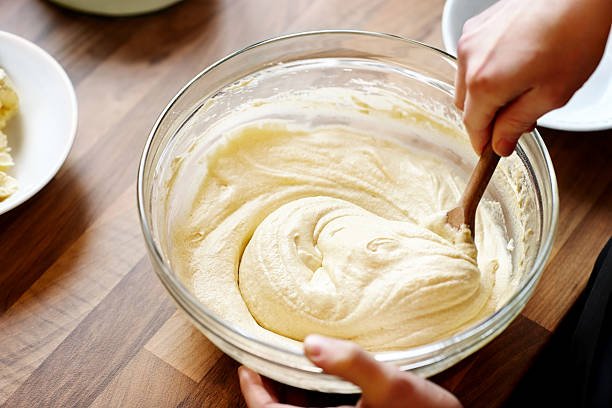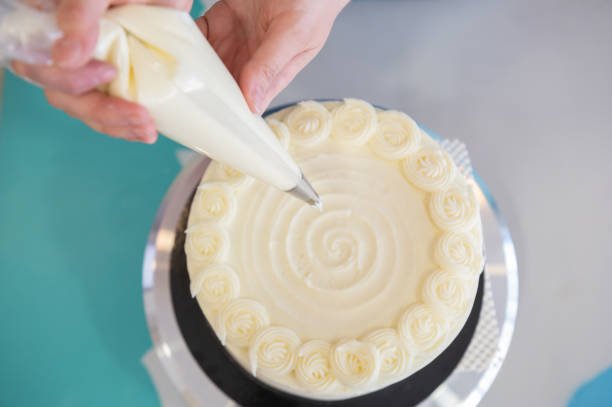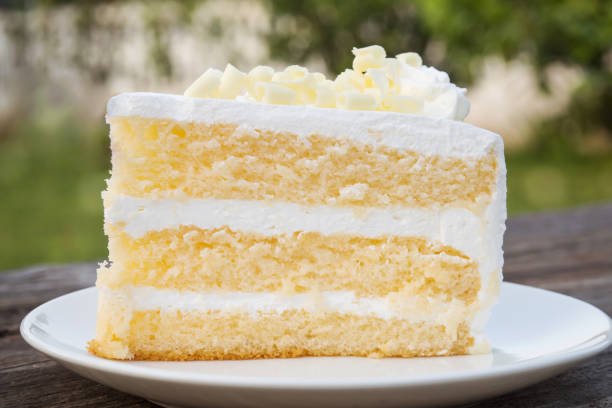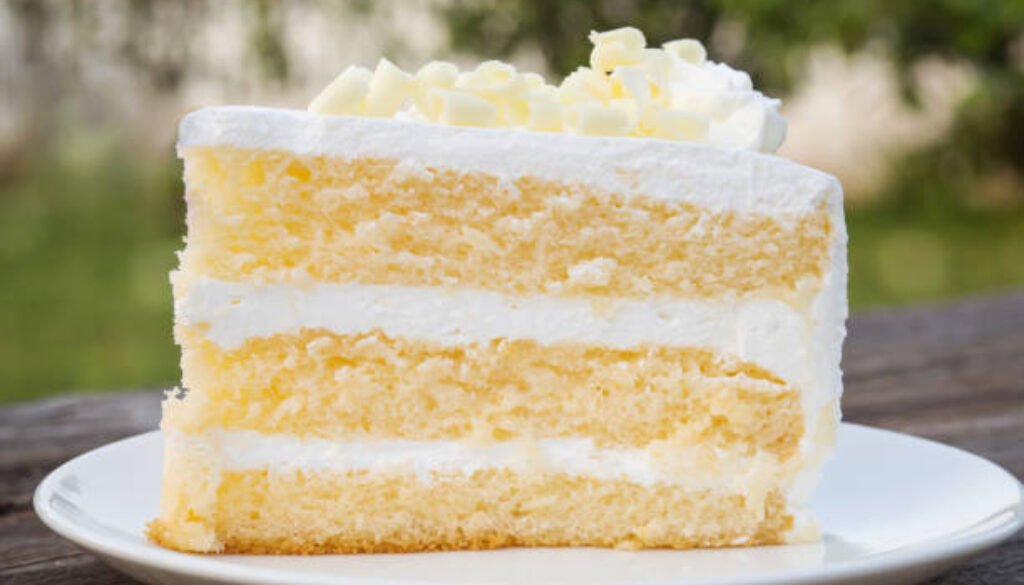How to Make a 2 Pound Vanilla Cake: A Quick Guide
1. Gathering Ingredients and Tools

Creating a delicious 2 pound vanilla cake begins with assembling the right ingredients and tools. To ensure precision and an optimal outcome, it’s crucial to have everything ready before you start. Here is a comprehensive list of the ingredients and their exact quantities:
- 2 cups of all-purpose flour
- 1 and 1/2 cups of granulated sugar
- 4 large eggs
- 1 cup of unsalted butter (2 sticks), at room temperature
- 1 cup of whole milk, at room temperature
- 2 teaspoons of vanilla extract
- 2 teaspoons of baking powder
- 1/2 teaspoon of salt
Equally important is the assembly of the necessary tools:
- Measuring cups and spoons
- Mixing bowls
- A hand or stand mixer
- A 9-inch round cake pan
- Parchment paper
- A cooling rack
Having all ingredients at room temperature is essential for achieving a smooth batter, which in turn affects the cake’s texture. Room temperature ingredients blend more easily, ensuring a uniform mixture that helps the cake rise evenly and maintain a consistent crumb.
To prepare, start by preheating your oven to 350°F (175°C). Grease your cake pan and line it with parchment paper to prevent sticking. Measure out all your ingredients accurately, using measuring cups for dry ingredients and liquid measuring cups for wet ingredients. This precision guarantees that your vanilla cake will weigh 2 pounds and have the perfect balance of flavors and textures.
2. Mixing the Batter

Begin by preheating your oven to 350°F (175°C) to ensure it’s at the right temperature when you’re ready to bake your 2-pound vanilla cake. Proper oven temperature is crucial for achieving a consistent bake.
Next, focus on creaming the butter and sugar together. Place 1 cup of unsalted butter, softened to room temperature, and 2 cups of granulated sugar in a large mixing bowl. Using an electric mixer, beat the butter and sugar together on medium speed until the mixture becomes light and fluffy. This process typically takes about 4-5 minutes. Creaming the butter and sugar adequately is essential for incorporating air into the batter, contributing to a spongy texture in your vanilla cake.
Once the butter and sugar are well creamed, it’s time to add the eggs. Add 4 large eggs to the mixture, one at a time. Ensure each egg is fully incorporated before adding the next. This gradual addition helps maintain the emulsion and prevents the batter from curdling. After the eggs are mixed in, add 2 teaspoons of pure vanilla extract, which will infuse the batter with a rich vanilla flavor.
In a separate bowl, sift together the dry ingredients: 3 cups of all-purpose flour, 1 tablespoon of baking powder, and a pinch of salt. Sifting helps to aerate the flour and remove any lumps, ensuring a smooth batter. Gradually add the dry ingredients to the wet mixture, alternating with 1 cup of whole milk. Start with a portion of the dry ingredients, mix until just combined, then add a portion of the milk. Repeat this process until all the dry ingredients and milk are incorporated.
Be mindful not to over-mix the batter once the dry ingredients are added. Over-mixing can lead to a dense, tough cake as it develops the gluten in the flour. Mix just until everything is combined and no streaks of flour remain.
3. Baking the Cake

Preparing the cake pan is a crucial step to ensure your 2-pound vanilla cake releases effortlessly after baking. Begin by greasing the inside of the pan thoroughly with butter or a non-stick spray. Next, line the bottom with a piece of parchment paper cut to fit. This dual approach minimizes the risk of the cake sticking, guaranteeing a smooth, pristine finish.
Once your pan is ready, pour the vanilla cake batter into it, ensuring an even distribution. Use a spatula to smooth the top, creating a level surface that will bake uniformly. Preheat your oven to 350°F (175°C), a standard temperature for vanilla cakes, ensuring it reaches the desired heat before placing the pan inside.
Bake the cake in the centre of the oven to promote even cooking. It is vital not to open the oven door frequently during the baking process, as this can cause the cake to sink. The initial baking time should be approximately 30-35 minutes. However, baking times may vary based on your oven’s accuracy and the pan’s material.
To check if your vanilla cake is done, insert a toothpick or cake tester into the center of the cake at around the 30-minute mark. If it comes out clean or with a few crumbs, your cake is ready. If the toothpick has wet batter on it, continue to bake, checking at 5-minute intervals.
If you notice the top of your cake browning too quickly while the inside is still undercooked, tent a piece of aluminium foil loosely over the top. This technique helps prevent excessive browning and allows the interior to bake thoroughly.
Once the cake passes the toothpick test, remove it from the oven and let it cool in the pan for about 10 minutes.
4. Decorating

After baking your 2-pound vanilla cake, the cooling process is crucial to prevent it from becoming soggy. Start by allowing the cake to cool in the pan for approximately 10-15 minutes. This initial cooling phase helps the cake to firm up, making it easier to handle. Following this, carefully transfer the cake from the pan to a cooling rack. The cooling rack allows air to circulate around the cake, ensuring even cooling and preventing moisture from accumulating at the bottom.
Once your vanilla cake is completely cooled, you can begin decorating. A simple yet delightful option is to spread a layer of vanilla buttercream frosting. To achieve a smooth and even layer, start by placing a dollop of frosting in the center of the cake and use an offset spatula to spread it outwards. For smooth edges, hold the spatula at a slight angle and rotate the cake as you work. If you prefer a minimalist touch, a dusting of powdered sugar can add a touch of elegance without overwhelming the cake’s natural flavor.
For more elaborate decorations, consider using fondant or fresh fruit. Fondant can be rolled out and draped over the cake for a polished, professional look, while fresh fruit can provide a burst of color and flavor. When using fondant, make sure to smooth out any wrinkles or air bubbles with a fondant smoother. If opting for fresh fruit, choose fruits that complement the vanilla flavor, such as berries or citrus slices, and arrange them artistically on top of the cake.
To keep your vanilla cake fresh until serving, proper storage is essential. If you plan to serve the cake within a day, keeping it covered at room temperature is sufficient. For longer storage, place the cake in an airtight container and refrigerate it. This helps maintain its moisture and prevents it from drying out. If the cake is decorated with perishable items like fresh fruit or cream,
refrigeration is necessary. Before serving, allow the cake to come to room temperature for the best flavor and texture.
5. Serve

